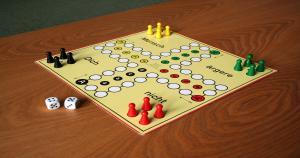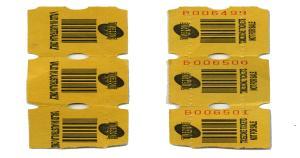Dynamic QR Codes on Books: Revolutionizing Reading and Learning
Jonathan Palley
Feb 26, 2024
The continuous advancement of technology has transformed the way we live and do things in our everyday lives – including reading books. Adding QR codes on books is currently one of the popular trends in the publishing industry today.
These small square-shaped barcodes can be scanned by smartphones and other dedicated scanners allowing readers to access a digitized version of various contents and resources.
Keep reading as we reveal the benefits of using QR codes on books and the best practices involved to achieve optimal results.
Benefits of Using Dynamic QR Codes on Books
QR codes are often used for online purchases and accomplishing transactions. However, its purpose is not only limited to that. The use of QR codes also offers a wide range of benefits to engage readers, publishers and others alike to effectively share and access written works.
Listed below are some of the key benefits of using QR codes:
Accessibility for Readers with Disabilities
One great advantage of implementing QR codes for books is that it offers an alternative format for readers with visual impairments. Unlike traditional printed books, readers can access a digital version of the book to utilize assistive features such as text-to-speech and font size adjustment.
With QR codes, books have become more accessible to cater to the needs of different readers. Thus, promoting inclusivity and diversity in the literature world.
Enhanced Reader Engagement
A dynamic QR code can also be helpful to improve the reading experience by providing additional multimedia content.
Publishers can include content like videos, images and audio files to make the book reading more enjoyable for bookworms. This way, readers will have a better understanding of the material.
For example, a dynamic QR code in a cookbook can be used to direct the reader to a video tutorial on how to prepare the recipe. It can also be employed as a travel guide to serve as a map connecting readers to a specific destination.
Additional Information and Resources
QR codes for books are perfect to provide an unending amount of information and resources to readers. Publishing houses can include bios, book reviews, related literature, articles and website URLs that can add value to the reading experience. This can also help to direct readers to discussion boards, where they can discuss questions with other book readers.
Gather Data and Insights
The use of QR codes is not only for the reader’s convenience, but it is also beneficial for many publishers.
Publishers can utilize dynamic QR codes for tracking the number of scans. This gives them important data on which parts of the books are popular among readers and how they can build digital marketing strategies about it.
Direct Link to Online Retailer for Purchasing
Let’s not forget that QR codes also provide access to readers who want to purchase books similar to the genre they have just read. It can serve as a direct link to online retailers’ websites, where readers can access other book collections and merchandise.
By doing this, readers can purchase the book on the spot without needing to go out and visit the physical store. This not only provides ease on the side of readers but also helps increase the sales of book publishers.
How to Create and Use Dynamic QR Codes
After exploring the benefits of QR codes, let’s now take a closer look at how you can create them. Doing this helps you gain a better understanding of how you can use them effectively.
Let’s start!
Step 1: Choose a QR Code Generator
Using a dynamic QR code generator is the most reliable and fastest way to create QR codes. So for this step, you can visit QR Code Generator Hub to create your own QR and identify the type of data you are going to store.
QR Code Generator Hub is the most suitable generator as it is free to use and offers unlimited scanning and tracking.
Step 2: Select Dynamic QR Code Type
Customize your dynamic QR codes to complement the diverse content within your books. Whether it's linking to author interviews, providing exclusive access to bonus chapters, or offering multimedia content, our platform caters to various content types, ensuring your dynamic QR codes become gateways to an immersive reading experience.
Step 3: Customize Your QR Code
The next part of creating a dynamic QR code is customizing it. In this part, you want to ensure that the dynamic QR code aligns with the writer or the publisher. You can change the color, add a logo, resize, change text and choose a frame.
Step 4: Download in Your Preferred Format
Once satisfied with the design, download your dynamic QR code in various formats. Whether you need a high-resolution image for promotional materials or a digital file for online sharing, the QR Code Generator Hub provides the flexibility to choose the format for your book.
Step 5: Test Your Dynamic QR Code
After finalizing the design, you will need to test the QR code if it's working properly. You need to check if it directs readers to the correct URL and is scannable using different devices.
Conclusion
QR codes are the most simple and effective way to revolutionize the reading experience of many readers. It provides them with a large number of information and resources through their phones, tablets and other devices.
If you are a publisher, author or just a reader, considering using QR codes is definitely worth a try. Take your reading experience to the next level, visit our Academy for more educational resources about QR codes.
FAQs
What are QR codes used for in books?
There are many ways that QR codes can be used in books. For example, QR codes can be used to provide readers with links to websites with additional information about the book's content. QR codes can also be used to link to audio or video files that supplement the book's text. An audio QR code can also be used as a way for readers to share their thoughts and reviews about the book with others.
How do you put a QR code in a book?
You can put a QR code in a book by printing it on a sticker and affixing it to the book's cover.
How do I create a QR code for an eBook?
To create a QR code for an eBook, you can use the QR Code Generator Hub. With the QR Code Generator Hub, you can create QR Codes that include your logo, colors, and style. The QR Codes include unlimited scans and free tracking.
Which app is used to scan QR codes from books?
There is no one specific app that is used to scan QR codes from books. Any QR code scanner should be able to scan codes from books.



